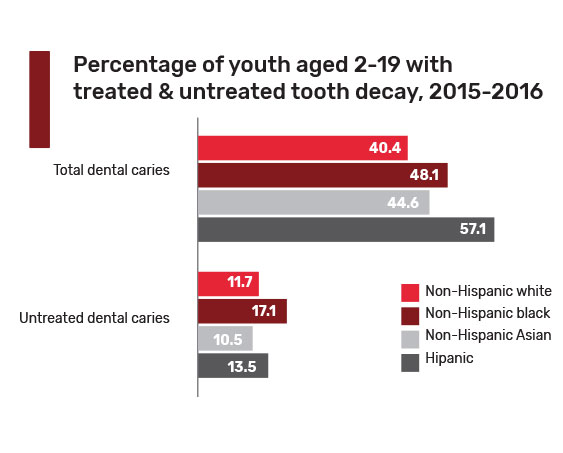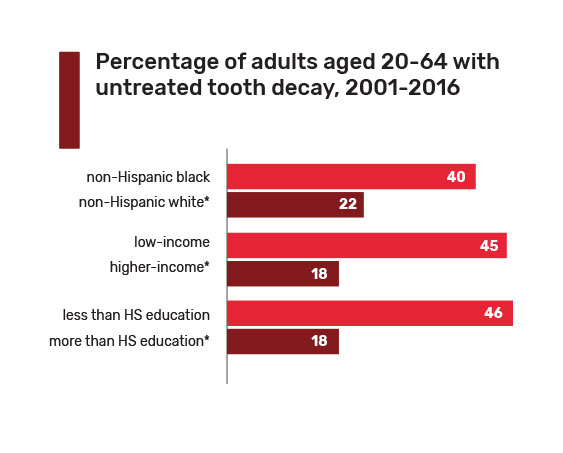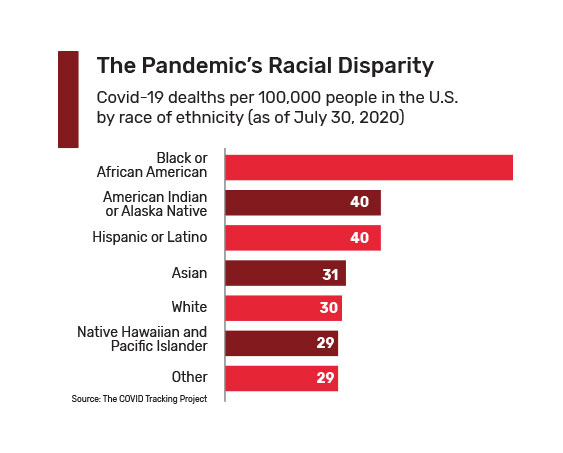Health Equity
OPEN’s definition:
Health equity is attainment of the highest level of health for all people. Achieving health equity requires:
— Adapted from Healthy People 2020 and Dr. Camara Jones



Despite major improvements in oral health for the population as a whole, oral health disparities exist for many racial and ethnic groups, by socioeconomic status, gender, age and geographic location.
In these charts, we see that non-hispanic whites, non-hispanic black, non-hispanic asians, and hispanic youth aged 2 to 19 suffer cavities…
In adults, also see the disparities among these same populations compared to non-hispanic whites, those with lower incomes, and those with less than a high school education.
Figure 1: https://www.cdc.gov/nchs/products/databriefs/db307.htm
Figure 2: https://www.cdc.gov/oralhealth/infographics/untreated-cavities-adults-tabs.html

This graph shows the racial disparities in COVID-19 deaths by race.
Health disparities are not new. COVID-19 has helped us see these disparities in a new light. by giving us real time data we can use to help understand these disparities. Racism is a social and environmental factor that impacts health. Racism has codified many policies and procedures that make things like COVID-19 more deadly for certain demographics, for example, where people live, resources available, transportation, and educational opportunities.
